SoundGuardian
To provide a peaceful, quiet workspace, ZUM is equipped with ergonomic furniture, ample air
circulation and adjustable lighting to reduce fatigue or discomfort caused by long working hours.
You're sure to feel refreshed and motivated when you dive into your projects, knowing you'll
have a space tailored to increase your productivity.
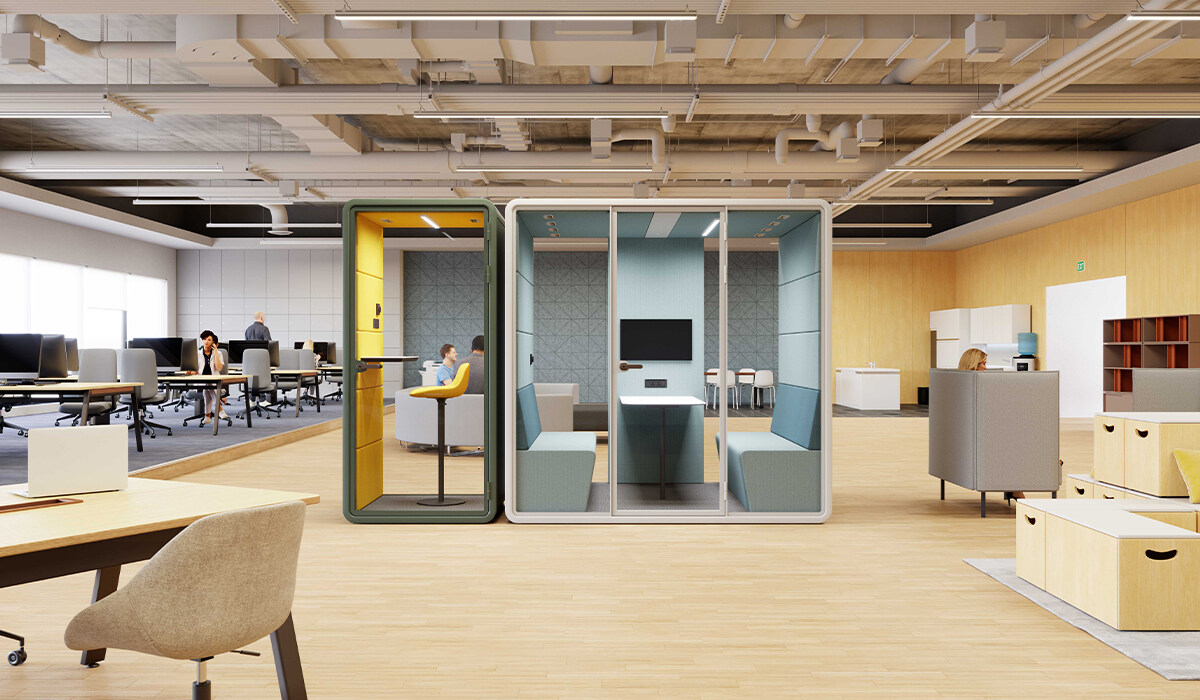
Unlocking Productivity – Acoustics and Privacy
Issues in Open Office Spaces
The “open office” has become a major trend in modern workplace design. The concept of an
open office is based on creating a collaborative and flexible work environment. However, while
this layout has certain advantages, it also comes with certain challenges, particularly in terms
of acoustics and privacy.
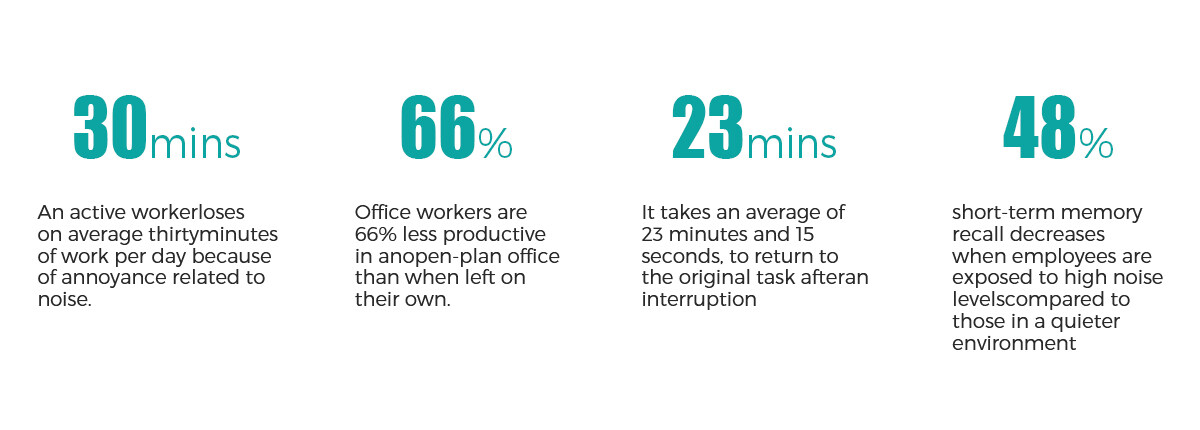
The main problem encountered with open offices is noise. With multiple employees working in
close proximity, noise levels can quickly rise, causing distraction and reduced productivity. Phone
calls, discussions between colleagues and even the sound of typing can add to the noise and
distractions. This constant background noise can make it difficult for employees to focus on their
tasks. This is especially problematic for employees who need a quiet environment to concentrate.
Another disadvantage of open offices is the lack of privacy. Personal conversations and confidential
meetings can become difficult without physical barriers between workstations. Due to a lack of
privacy, employees may feel uncomfortable discussing sensitive issues or having private phone
calls. This can lead to uneasiness and prevent effective communication within the team.
To address acoustic and privacy issues in open offices, employers have several viable options. Insta-
lling acoustic panels, partitions or cubicles can effectively reduce noise levels and create dedicated
areas for focused work. Another popular solution is the inclusion of acoustically quiet pods, which
provide employees with enclosed spaces for private conversations or focused tasks. These dedicated
quiet pods are equipped with sound-absorbing materials to create a quiet environment in noisy
offices. By providing these options, employers can meet different work needs and create a more
harmonious and efficient workspace.
Elevate your workspace with the Office Pod
Not just a solution for office meetings and negotiations but a versatile haven for individual work.
Beyond the traditional office setting, it seamlessly transitions into a music practice room, creating
an isolated space where sound can flourish without interference. The Office Pod isn't limited to
work either; it transforms into an ideal sanctuary for mothers and infants in public spaces. Offering
a discreet and quiet refuge, it becomes a perfect haven for women and children, ensuring privacy
and comfort in shared environments.
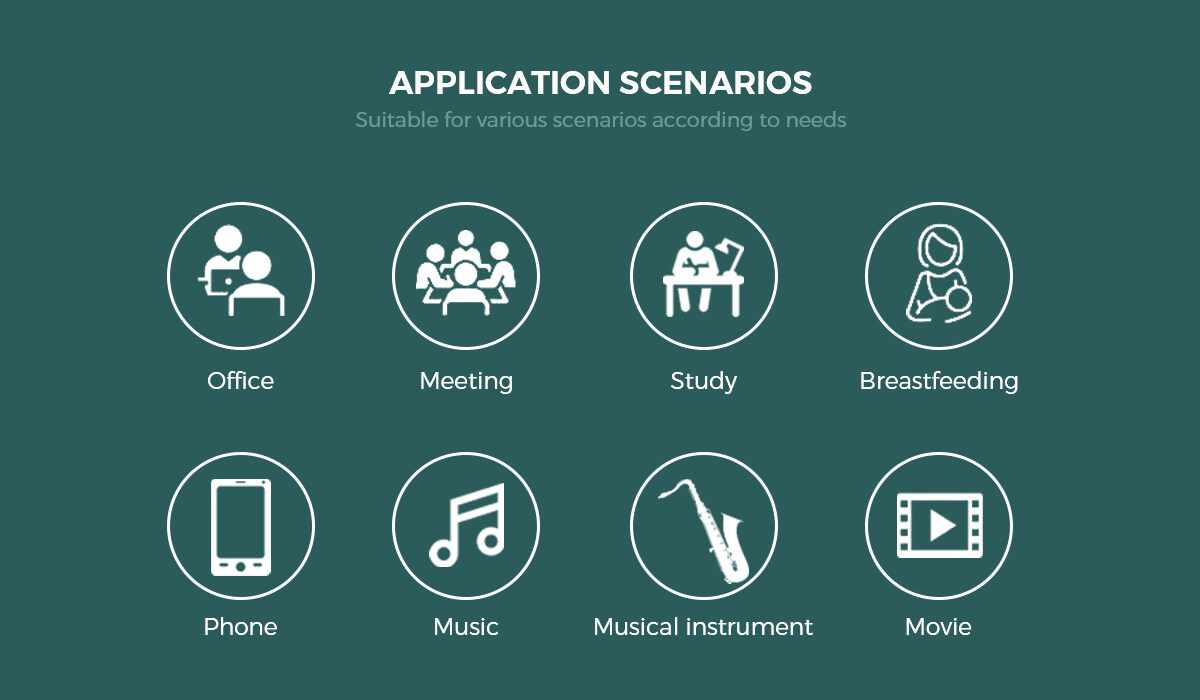
How do we achieve noise reduction?
Immerse yourself in a world of tranquility with our meticulously crafted Office Pod, where sound
is not just managed but mastered. Understanding the intricacies of sound transmission through
the air, we've designed a space that harmonizes with the principles of sound propagation. Our
approach addresses four crucial points, ensuring an unparalleled acoustic experience:
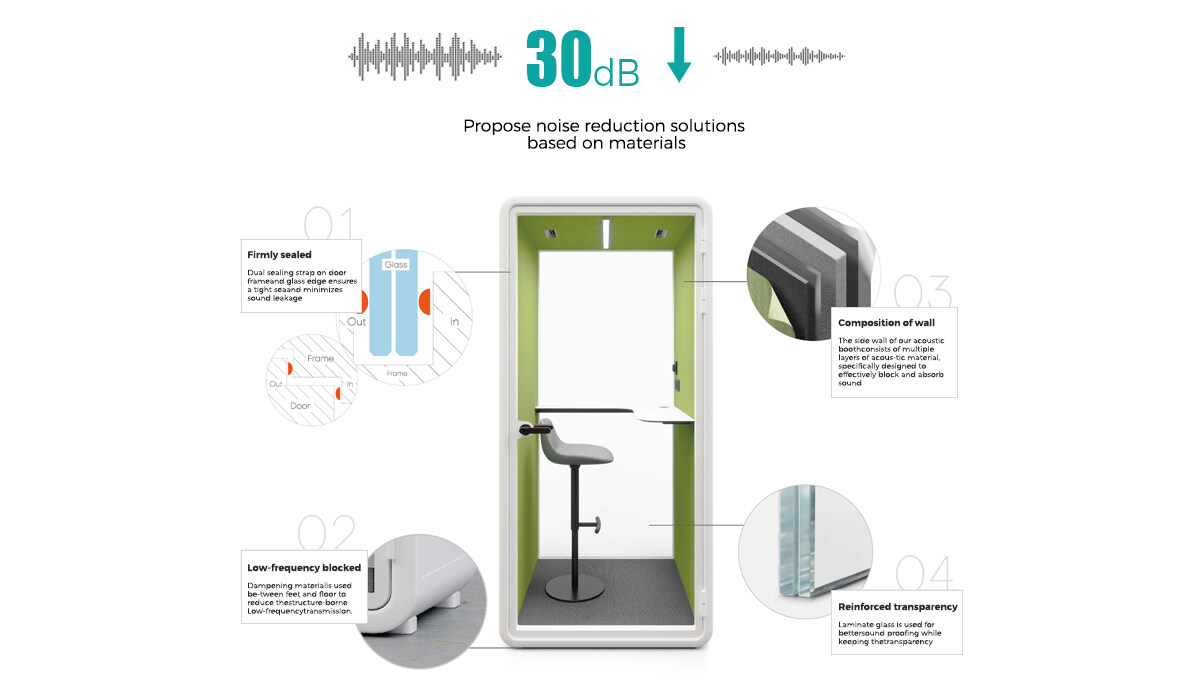
1. Airtight Seals:Double-sealed with precision adhesive strips along door frames and glass edges,
our Office Pod guarantees a hermetic seal, minimizing sound leakage to its absolute minimum.
2. Low-Frequency Isolation: The base is equipped with soft, shock-absorbing materials to dampen
low-frequency noise transmitted through the building structure, creating an oasis of calm amidst the
chaos.
3. Multilayered Composite Walls: Our walls boast a composite construction featuring materials of
varying densities, combining sound-blocking and sound-absorption properties for an unparalleled
auditory experience.
4. Laminated Glass:The front is adorned with laminated glass, achieving a transparent aesthetic
while upholding superior soundproofing capabilities.
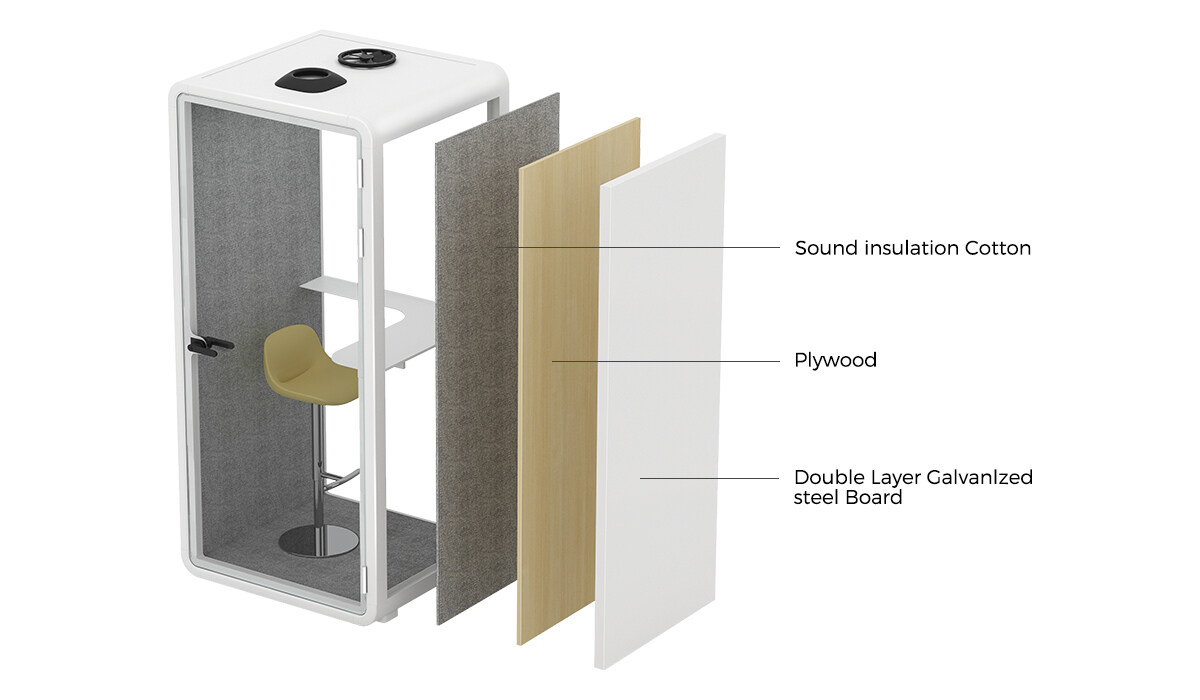
Tested rigorously under ISO23351-1:2020 standards, our Office Pod excels with a remarkable
30dB reduction in language volume levels. Step into a space where sound is not just heard but
truly appreciated – the Office Pod, where silence is perfected.
Details are the key to comfort
A well-designed soundproof cabin not only has an eye-catching appearance but also inspires user
participation and interaction, so we pay great attention to detail when creating soundproof cabin
products and strive to not only attract the eye but also provide a superior user experience. We
carefully design every aspect of our soundproof cabin to ensure optimal usability. Our goal is to
provide a seamless and enjoyable experience for all users, making it easy for them to enjoy this
silent resort.
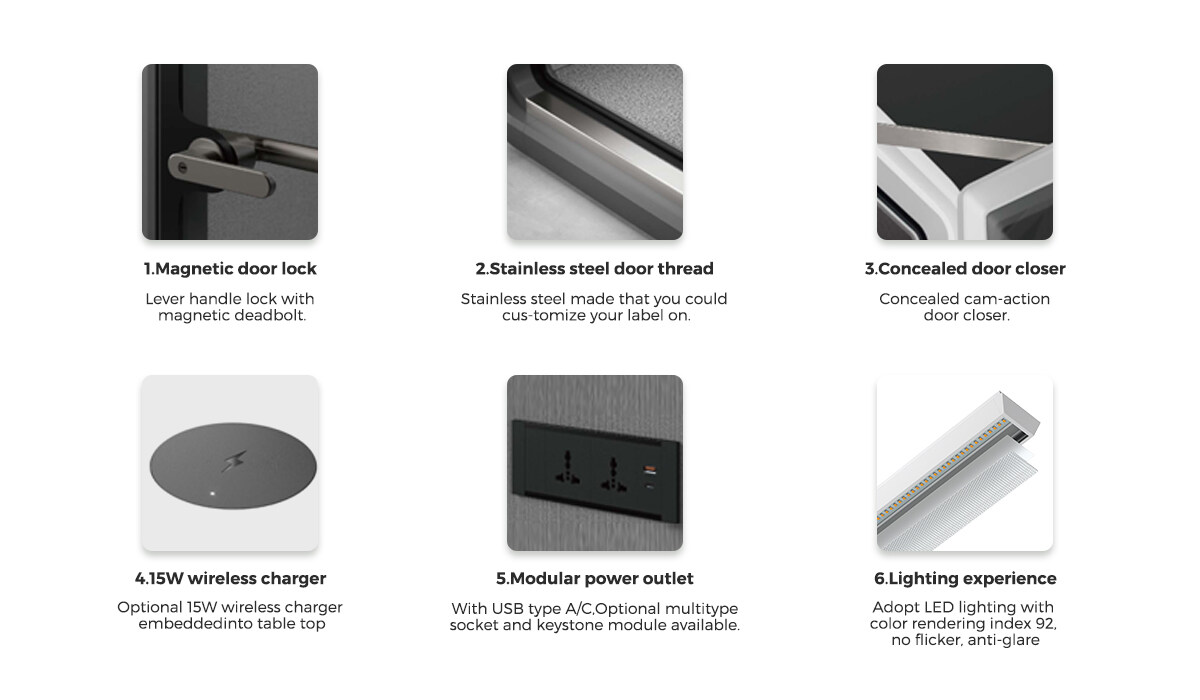
Is the indoor air stuffy? The answer is impossible
Balanced air pressure: We use fans at both the air intake and exhaust locations for forced ventila-
tion to maintain the same air pressure as the external environment. This helps improve the door's
seal and protects users from the discomfort of "airplane ear" (ear barotrauma).
Centrifugal fans: When the cabin is quiet, fan noise becomes noticeable. We use centrifugal fans for
air suction to achieve smoother airflow at lower speeds, resulting in less noise.
Automatic ventilation: every 30 minutes, the fan will automatically start for 5 minutes for ventilation,
keeping the ducts and soundproof cabin dry and smelling fresh, ready for the next user.
Sound-attenuating air ducts: Inspired by sound-attenuating plenums, we applied sound-absorbing
materials in the air ducts to minimize internal and external sound exchange.
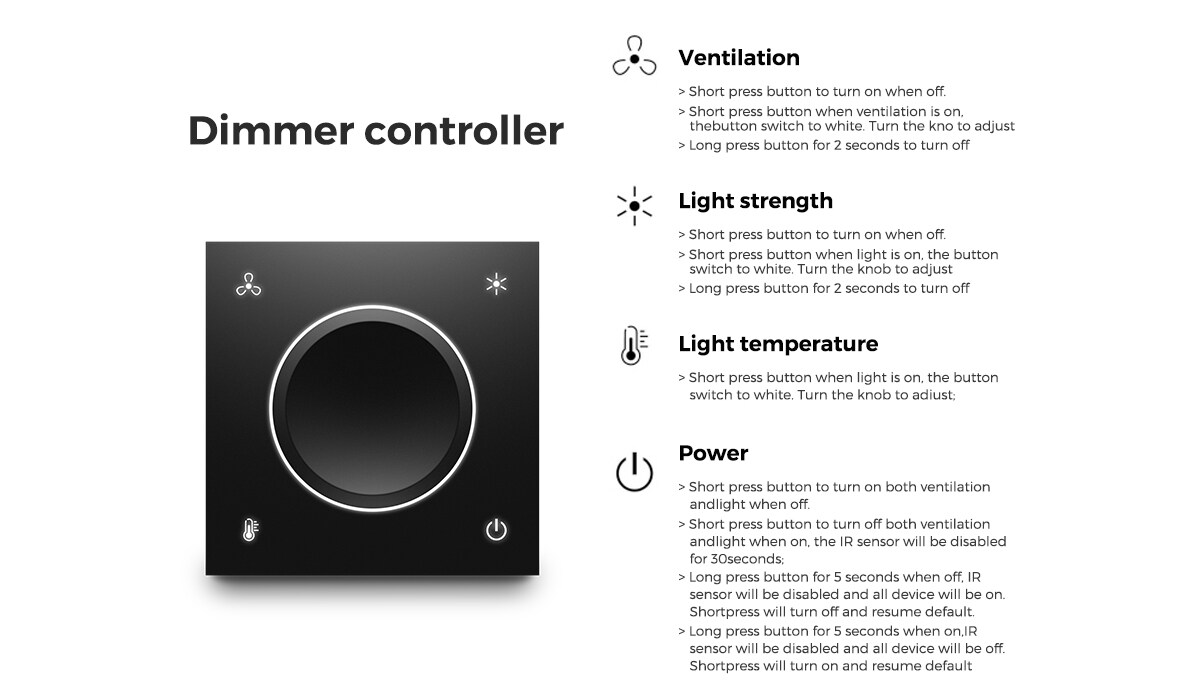
Easy to disassemble, move and expand
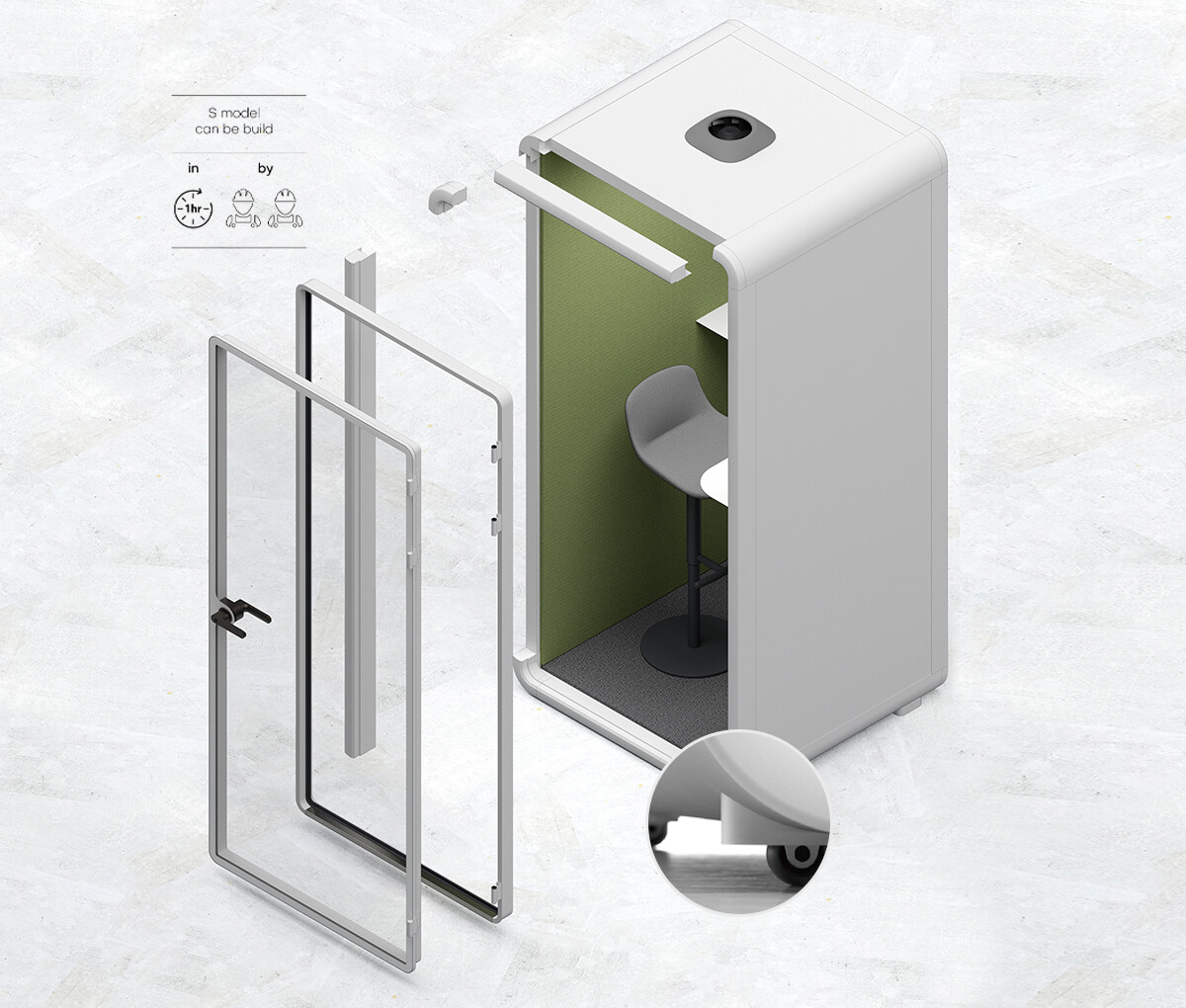
In just 1 hour, a new room can appear in your office, and only requires a minimum of 2 people (Model S)
to complete the installation. The modular design makes the installation process quick and convenient,
without cutting, drilling or gluing. No waste is produced during the construction process. The packaging
materials are recyclable and can be used immediately after installation.
Optional removable casters allow it to be moved and repositioned when needed. This flexibility ensures
that you can adjust the location of your soundproof pod to suit your changing needs or room layout.
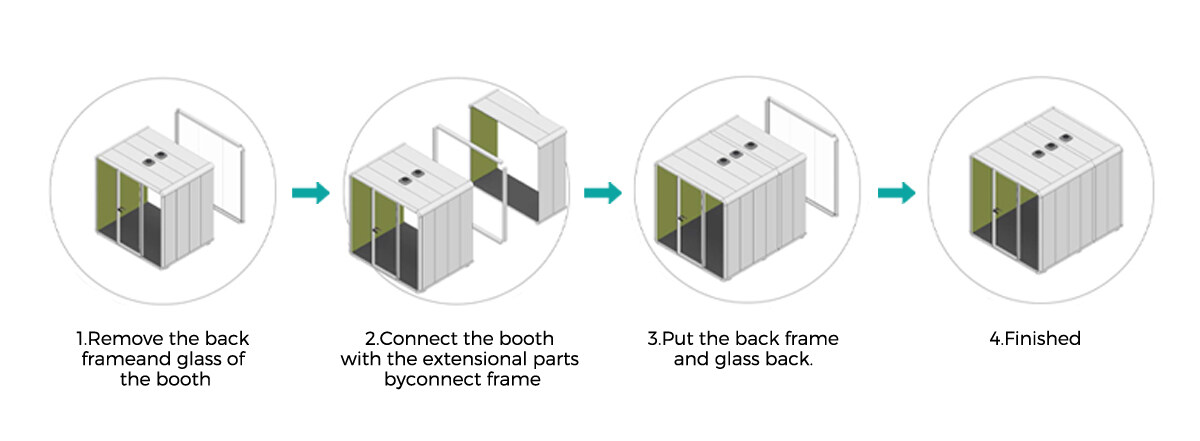
Additionally, SoundGuardian can be easily expanded to larger sizes to meet various customer needs.
By using special connecting parts, 2 or more cabins can be combined into a larger temporary cabin to
host large events. You can also order new cabin parts for permanent changes. No matter the challenge,
SoundGuardian adapts quickly to handle new tasks with optimal performance.
About special customization
While our existing designs exemplify innovation and functionality, we encourage our clients to tailor their
pods to suit their unique spaces. Why settle for the ordinary when you can create the extraordinary?
Personalize your SoundGuardian Office Pod to ensure it seamlessly integrates into your environment,
embodying both style and purpose. Whether it's a specific color scheme, additional features, or unique
layouts, let your imagination run wild. Elevate your workspace experience with a customized touch that
transforms your SoundGuardian Office Pod into a personalized haven of productivity. Because, at Sound-
Guardian, we believe your space should not only meet your needs but also reflect your individuality. Your
vision, your pod – let's make it happen!
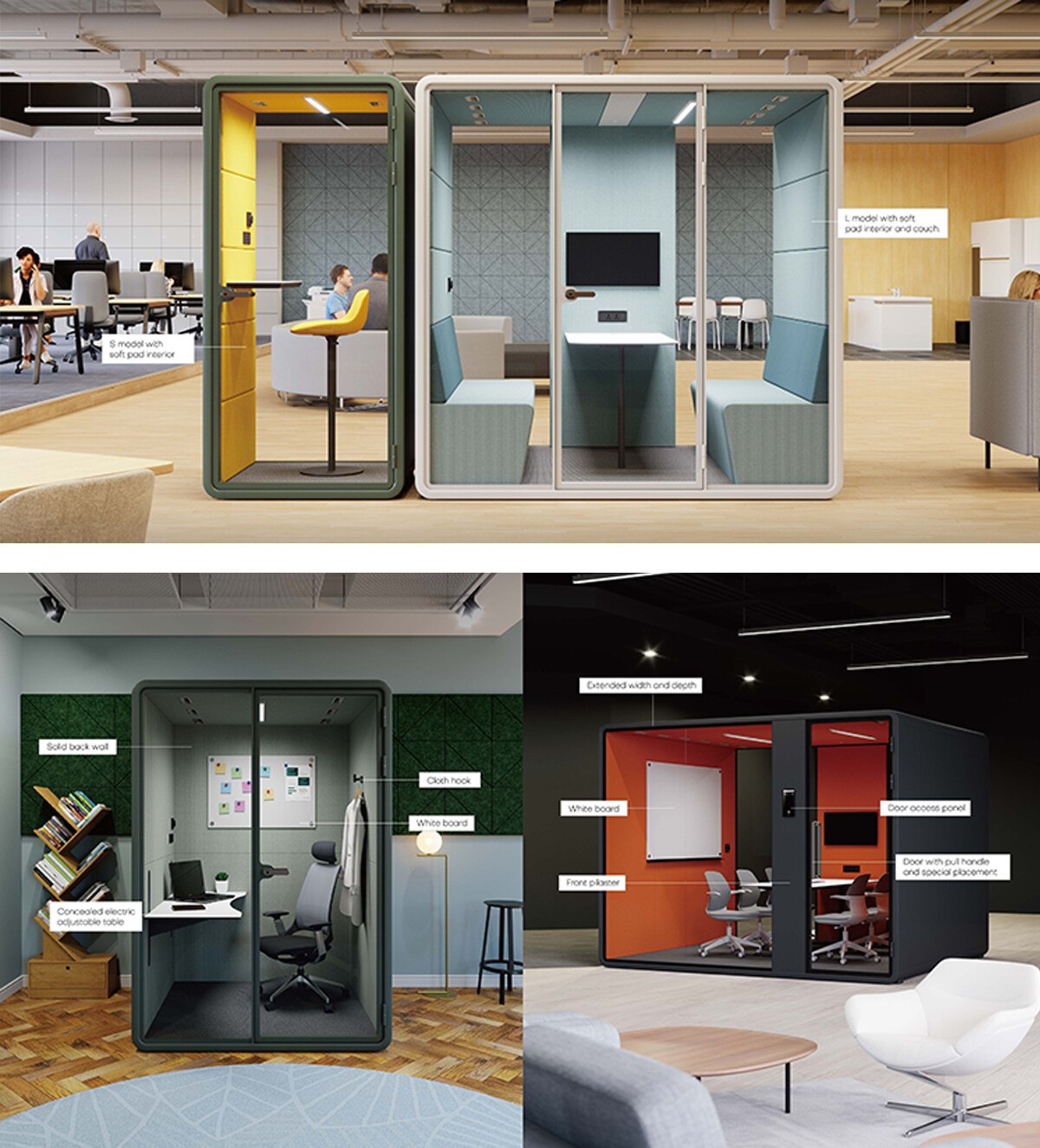
User Manual
Choosing us means getting more than just a product – it's gaining access to a comprehensive user
manual that's your go-to guide for everything you need. Packed with product specifications, essential
tips, installation instructions, and maintenance guidelines, our user manual is your key to unlocking
the full potential of your purchase. We believe in providing not only top-notch products but also
empowering our customers with the knowledge and tools to make the most out of their investment.
With us, it's not just about a transaction; it's about ensuring you have all the information and support
you need for a seamless experience. Your satisfaction is our priority, and our user manual is the
roadmap to guarantee it. Welcome to a partnership where clarity and guidance go hand in hand with
our exceptional products.
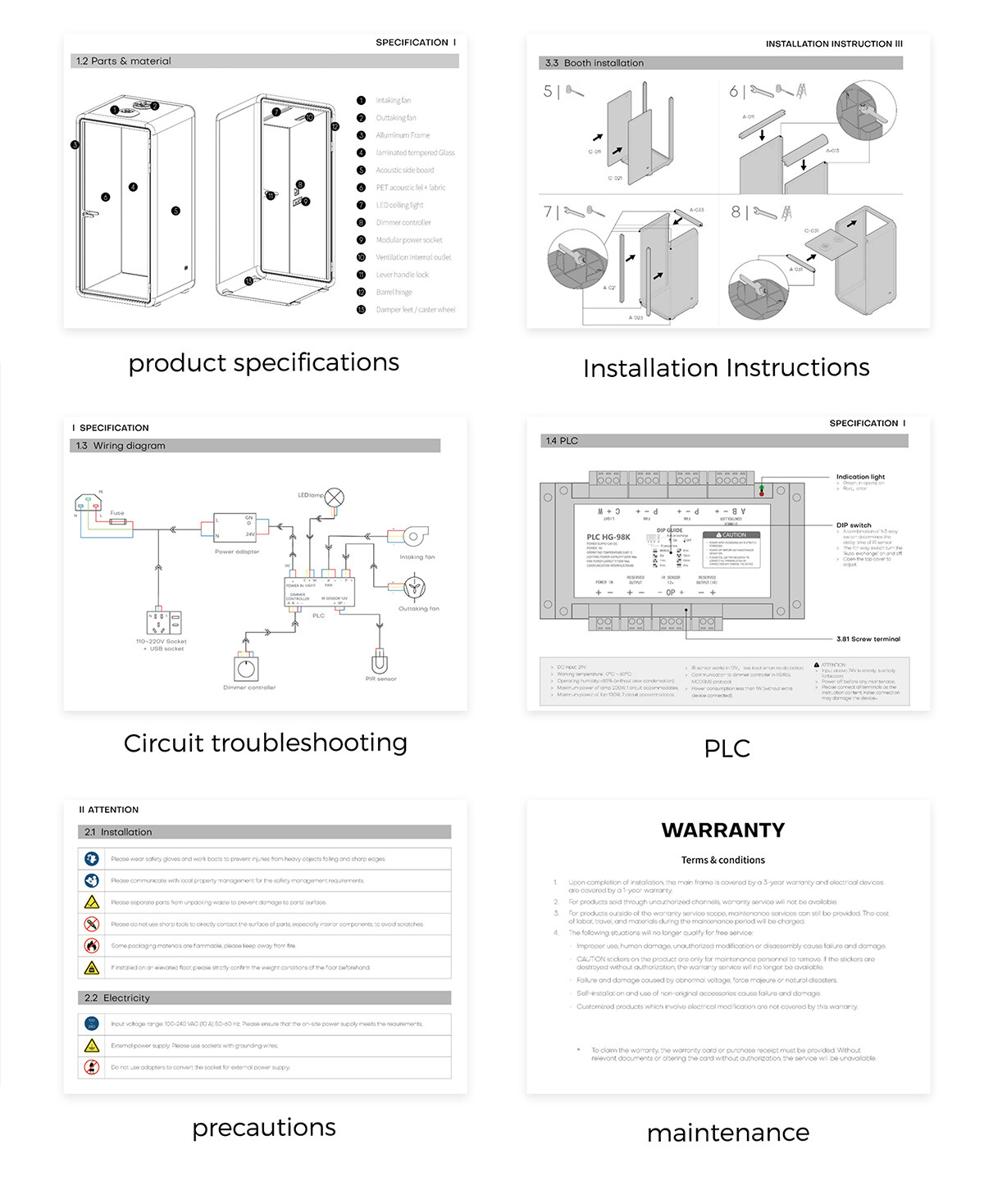
Acoustic information
What is ISO 23351-1:2020 ?
ISO23351-1:2020 is a newly launched standard that evaluates the ability of phone booths, work
pods and other furniture combinations to reduce speech levels. Through the specified test, it
calculates an indicator called "Speech Level Reduction", expressed in DSA (decibel / dB). This
standard is the first of its kind to specifically address cabins and similar partially enclosed furniture
units. Office pods are classified as Class A+, A, B, C or D based on the degree of speech level
reduction they offer. Office pods in Class A+, A and B ensure the highest level of speech privacy.
How to reduce sound propagation ?
Use high-density soundproofing materials such as metal, concrete and glass on major surfaces to
effectively reduce the transmission of sound waves.
Optimize gap sealing by using waterproof adhesive, weatherstripping or other appropriate sealing
materials to ensure minimal noise leakage.
In areas where complete sound insulation cannot be achieved, such as ventilation ducts, try to
increase the distance the sound travels and apply sound-absorbing materials, such as PET acoustic
felt, along the path to disperse the sound energy.
What is STC and NIC?
STC (Sound Transmission Class) is a measure of a material's ability to block sound and is commonly
used to test partition materials such as partition walls and screens. The higher the STC value, the
better the partitioning material blocks sound. STC is important when evaluating partitions that isolate
areas where people talk.
NIC (Noise Isolation Level) measures the sound isolation between two rooms after construction. The
higher the NIC value, the better the sound isolation between rooms.
Although STC and NIC are similar, there are differences between them. NIC is a field measurement,
meaning it is taken in a real space, while STC is a measurement done in a laboratory. Because STC is
not performed on site, it does not take into account factors such as sound absorption in the receiving
room. This allows NIC to be more comprehensive in assessing the sound isolation of two rooms, rather
than just the wall between them. Both measurements can help check sound isolation effectiveness.
What is Speech intelligibility ?
Speech intelligibility refers to a listener's ability to understand and comprehend spoken words or mess-
ages. It measures the clarity and understandability of spoken expressions in a variety of contexts, such
as public address systems telecommunications, broadcast media, or live performances. Factors that
affect speech intelligibility include articulation, volume, background noise, and the quality of the audio
transmission system. High speech intelligibility is an ideal goal to ensure effective communication and
minimize misunderstandings.
What is Centrifugal fan ?
Unlike common axial fans, centrifugal fans usually consist of a fixed drum structure and one or more
impellers. Centrifugal fans move air in a radial direction. The resulting air flow is passed through a series
of ducts or ducts, creating a high-pressure air flow, making it ideal for suction, cooling, ventilation and
conveying air.
What is Laminate glass?
Laminated glass (also known as safety glass) is widely used for soundproofing purposes due to its unique
structure. Made up of multiple layers of glass bonded through a polyvinyl butyrate (PVB) middle layer,
laminated glass effectively reduces noise transmission by absorbing and scattering sound waves. This
design minimizes the transmission of external noise into the indoor environment, creating a quieter, more
tranquil atmosphere. In addition, laminated glass provides enhanced security, UV protection, and is often
used in windows, doors, and partitions to achieve better sound insulation in areas with high noise exposure.


